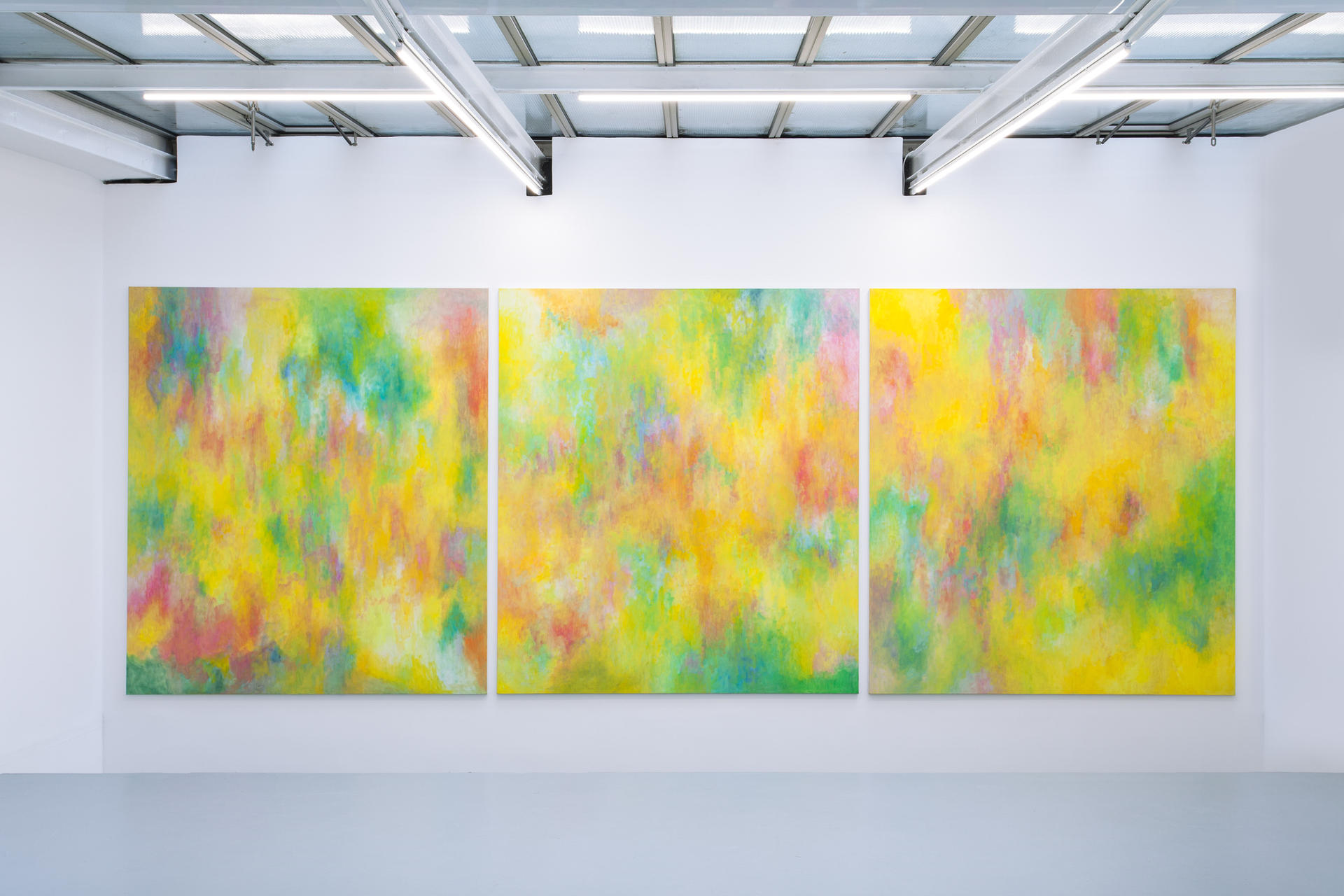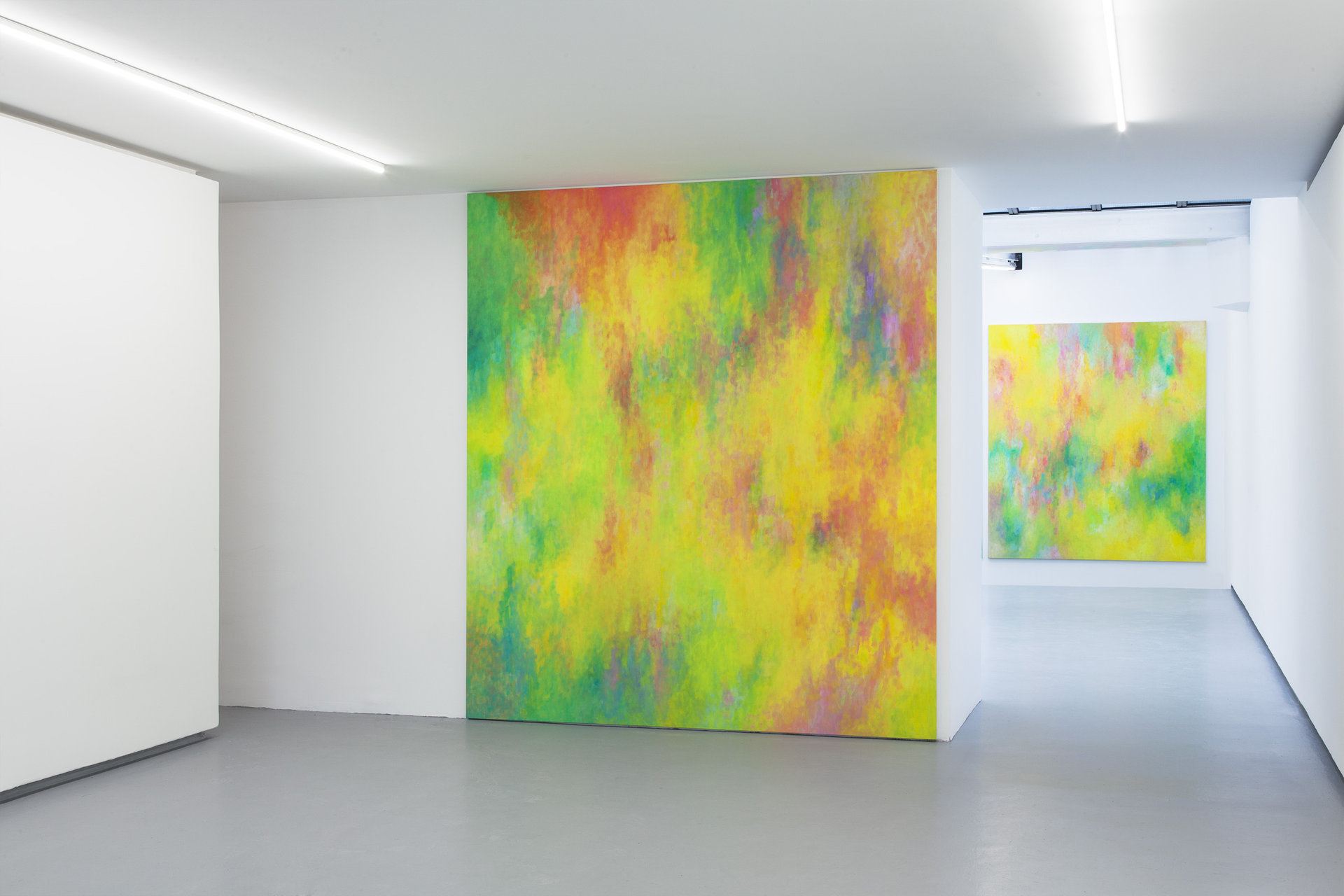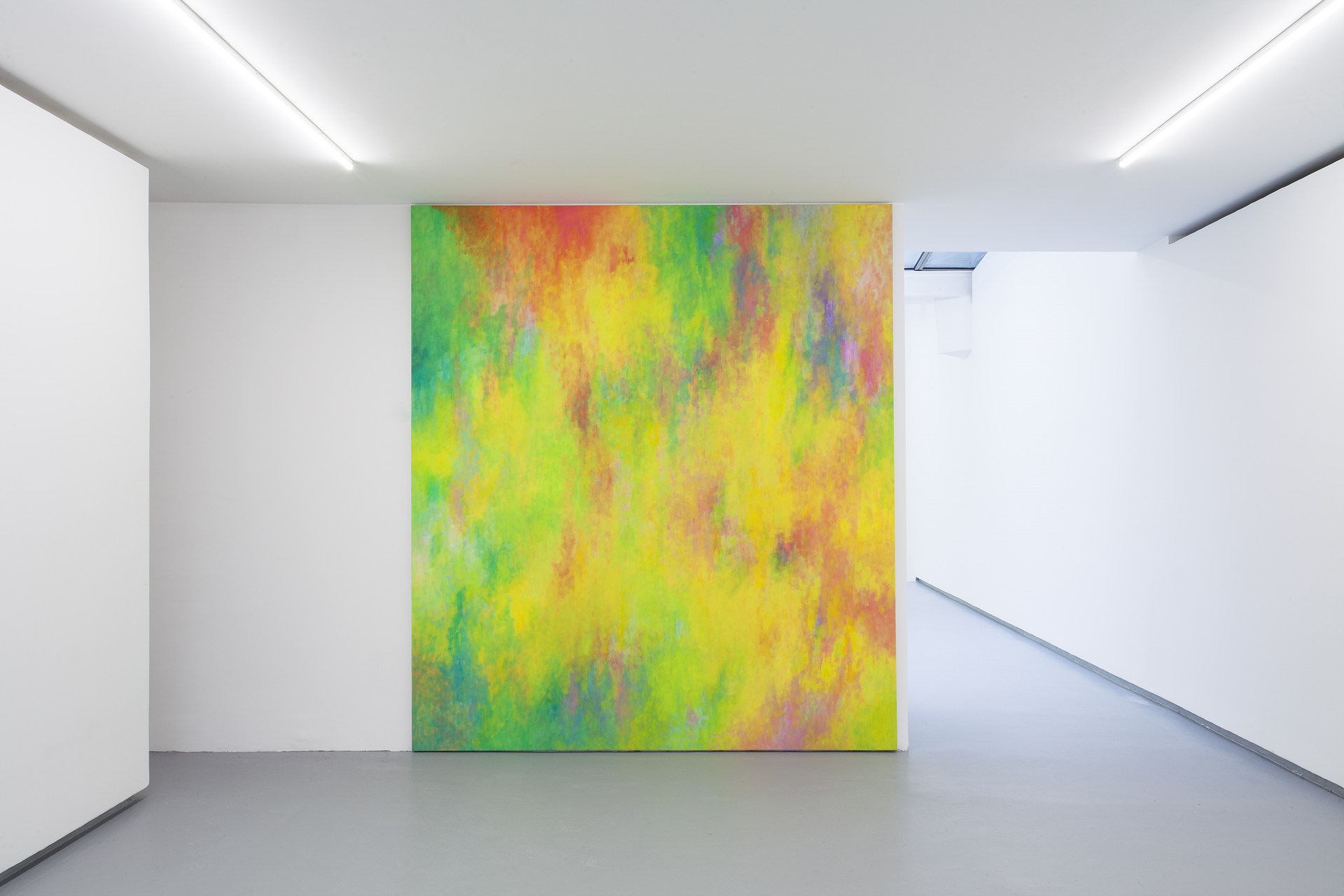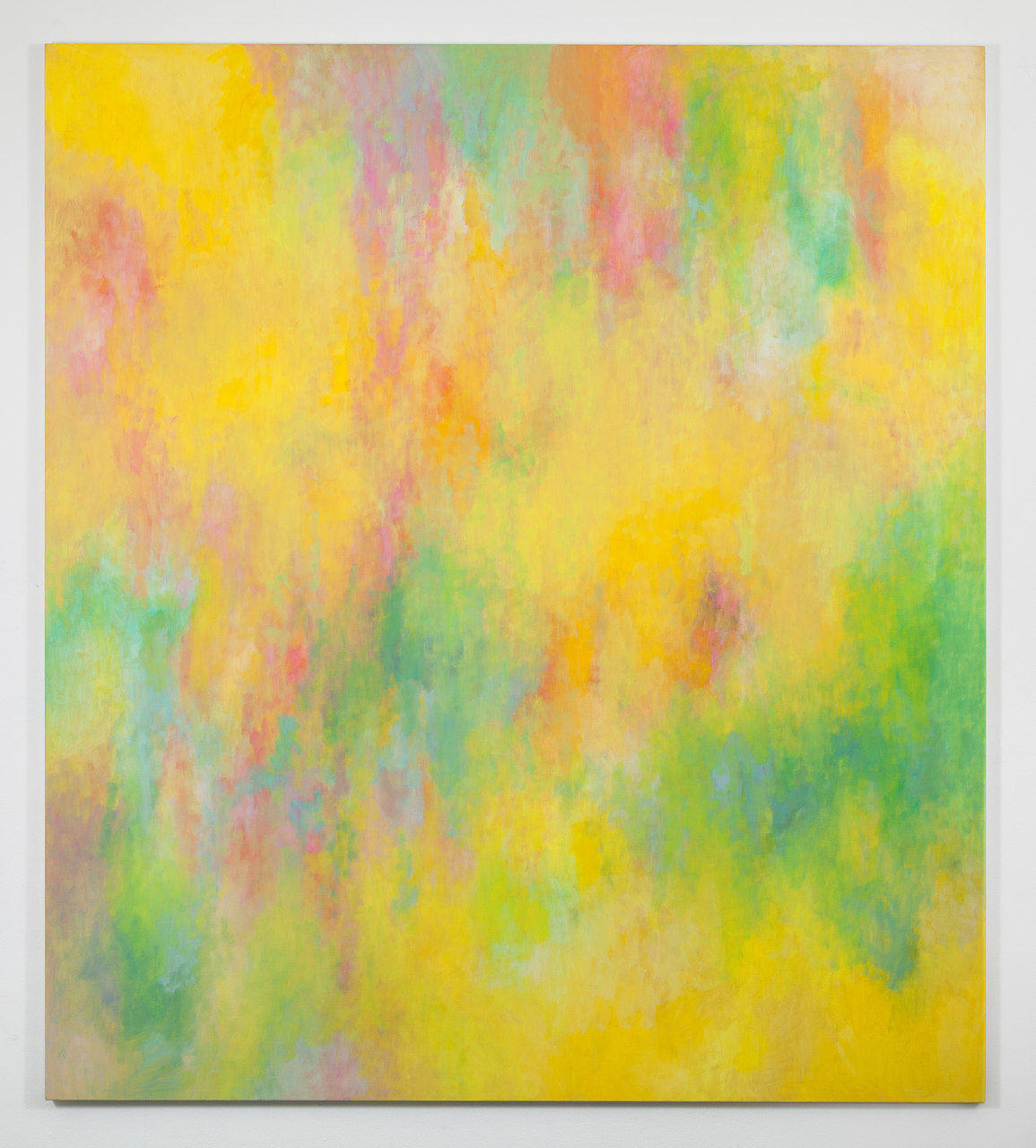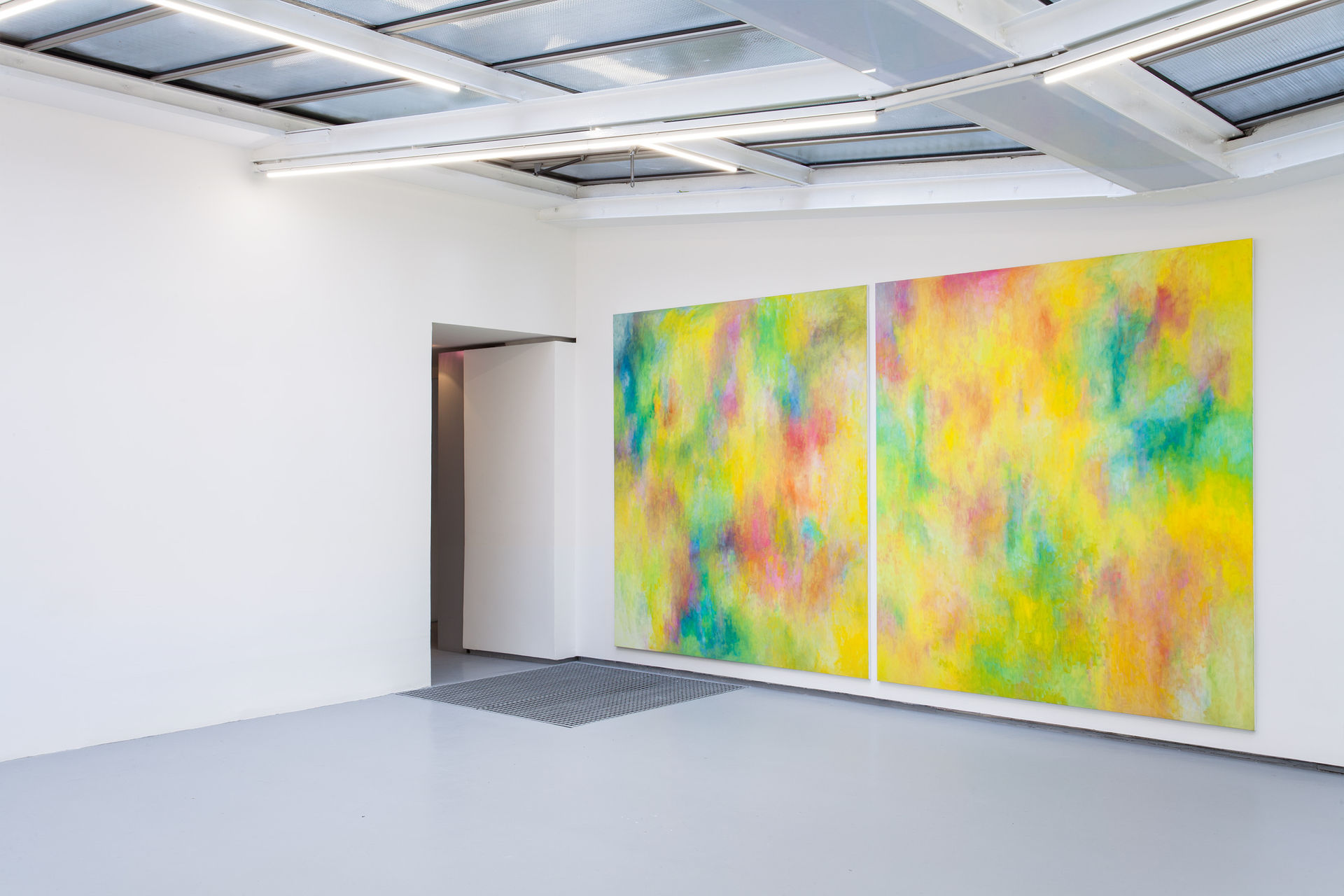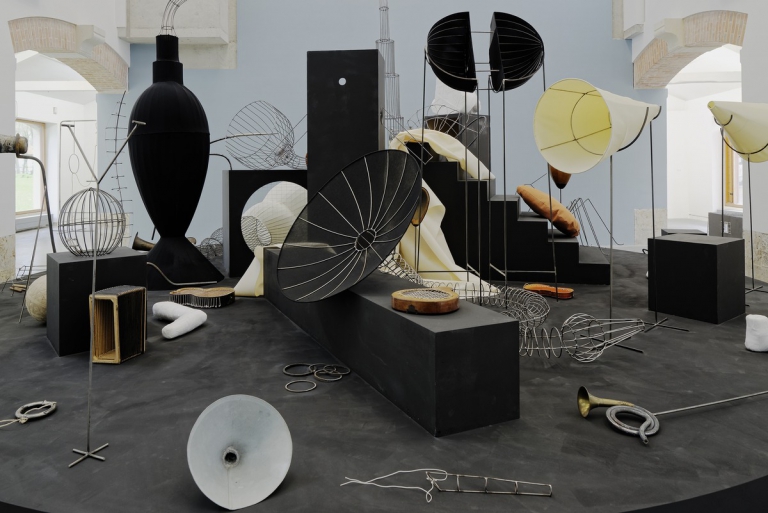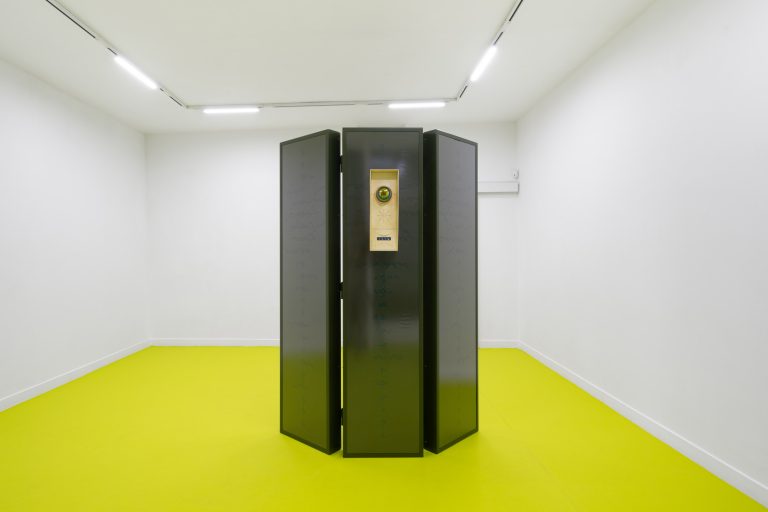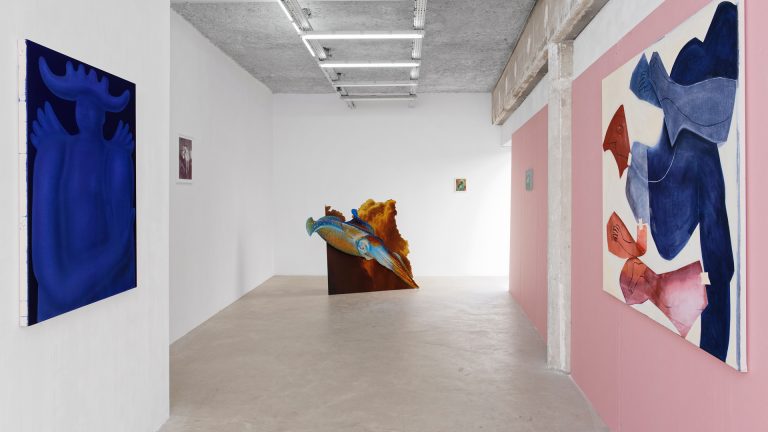
Artist: Jean-Baptiste Bernadet
Exhibition title: Vetiver
Venue: Galerie Valentin, Paris, France
Date: January 17 – March 7, 2015
Photography: Courtesy of the artist and Galerie Valentin, Paris
In his Philosophical Investigations, Wittgenstein describes the structure of our thoughts as they are prior to an illuminating discovery, when they remain on hold, with contradictions left to resolve. The task of any creative pursuit isn’t, according to him, to resolve or clarify these contradictions, but to give a “precise” idea of this disconcerting, confused situation that precedes the contradiction’s resolution. Similarly, the “clear and confused” atmosphere of Jean-Baptiste Bernadet’s paintings outlines a preliminary state, that floating zone where the contradiction hasn’t been treated and sent off, but subsists as reservation. Their haziness doesn’t illustrate a subjective state (expressionism), or objective (impressionism) but simply exists as such. As a “subject” it causes its own effect.
Here, the optical effects of blurriness and indetermination serve to identify a type of positioning, simultaneously ambiguous and precise, that the painting entertains with a framework of historical references, as it does with our contemporary visual lexicon. Jean-Baptiste Bernadet explores the proximity of forms and historically determined pictorial registers, perhaps over-determined – colorism, paysagisme, expressionism, biomorphism, impressionism – linked with a “test run” approach to his medium. The gesture learns through doing. Characterized by its diversity and quantity, the work oscillates between isolated pieces, often executed rapidly and loosely, and paintings developed according to the “group” or series principle, implying a long-term investment. The series and the use of technical protocols structures the use of chance that organizes the artist’s practice, confronting it with a system of interior rules that keep the expressivity and corporeal surplus of the gestural painting “under control”. The prolific nature of the work is emblematic of a generation of painters who have integrated the liberal value of excess in order to renegotiate the ideal values of accomplishment, finishing, and psychological history inherent in their medium. They redefine painting in terms of an attempt, a step, a threshold, a provision, a loss.
Excessive painting is also faulty painting, unbalancing the relationship that links the work and its author as a “project.” This type of production economy aims at constituting a “reserve” in which each painting can be reinterpreted, reevaluated, according to a principle of amplification and exhaustion.
In his relationship with format, Bernadet is interested in how the gaze is directed across the canvas, perturbing the chronology of apparition, decentralizing the regard while multiplying the vanishing points, all while playing on the striking and emphatic aspects of the color, the “cinemascope” effect of the large formats and their spatial articulation. The landscape theme is mobilized as a generic symbol, exhausted and blurred from reproduction, but participating in the Romantic and visionary tradition of the landscape genre. The Fugues series, produced by accumulating layers of brushstrokes, combines the expansive and ethereal movement of colored fields, and the intense, syncopated movement of the mark, playing on the tension between the emotional effect of the color and the mechanical nature of the gesture. The work doesn’t construct itself through composition but through accumulation and layering, each touch redefining the dynamic of the whole through a game of masking and obliteration. The laborious dimension of the mark introduces its scale, repositioning the intentionality initially perceived, its lyricism and virtuosity. Without neutralizing it, it introduces a motivational deficiency in the act of painting, the action here being both excessive and loss inducing.
Retour, a medium format series produced through contact between two surfaces, one covered with a color, the other black, renders visible its process of displacement and superimposition. In this sense, the painting can be read according a two-tier system. The first is metaphysical and introspective: that of the landscape painting, into whose history the series explicitly inserts itself. The second, literal, doesn’t cancel out the first but superimposes itself, bringing to the fore the load of the paint, the mechanical process of application and extraction that produced the painting in a single gesture, walking the line between the artist’s intervention and chance.
In the series Screen, comprised of acidic atmospheric landscapes, the oil paint is applied to the canvas in minute quantities, directly out of the tube. The saturated and regular character of the paste is modulated by the repeated gesture of spreading and blending the colors over the surface. The painting evokes a diagram of sensations recharging as they come into contact with each other. Here, the luminous intensity and the absence of a sense of scale evoke as much the enveloping effects of advertising imagery as a form of pictorial classicism.
Vetiver, a series of large format paintings begun in 2013, today presented in a new incarnation, reutilizes the same technical principle of spreading and synthesizing the paint directly on the canvas. Extremely diluted with turpentine, the paintings mix an effect of exhaustion with that of a loss of vitality suggested by the metamorphoses and the contamination of colors. The series borrows its name from an exotic root employed in perfumery, in the form of a thick resinous essence used to fabricate woody and earthy fragrances. Suggesting polymorphous paintings, the sensory saturation and declination of the works produces a sort of chromatic narcosis, with the painting wearing itself out, tapering off, moving forward on fumes.
Often, in the abstract painting of Jean-Baptiste Bernadet, a close read turns the sparkle and sheen over, revealing material depths. The fluid mechanics, the glitter, dazzle, seductive and ostentatious colorimetry point to dexterous reuse of the flux of images that saturate our washed-out visual diet, tiring out perceptual acuity. This confusion, simultaneously posited as a contemporary reevaluation of abstract painting and of our perceptual structure, becomes the ultimate possibility of regaining a state of consciousness at the very point where it emerges.
– Text by Clara Guislain

